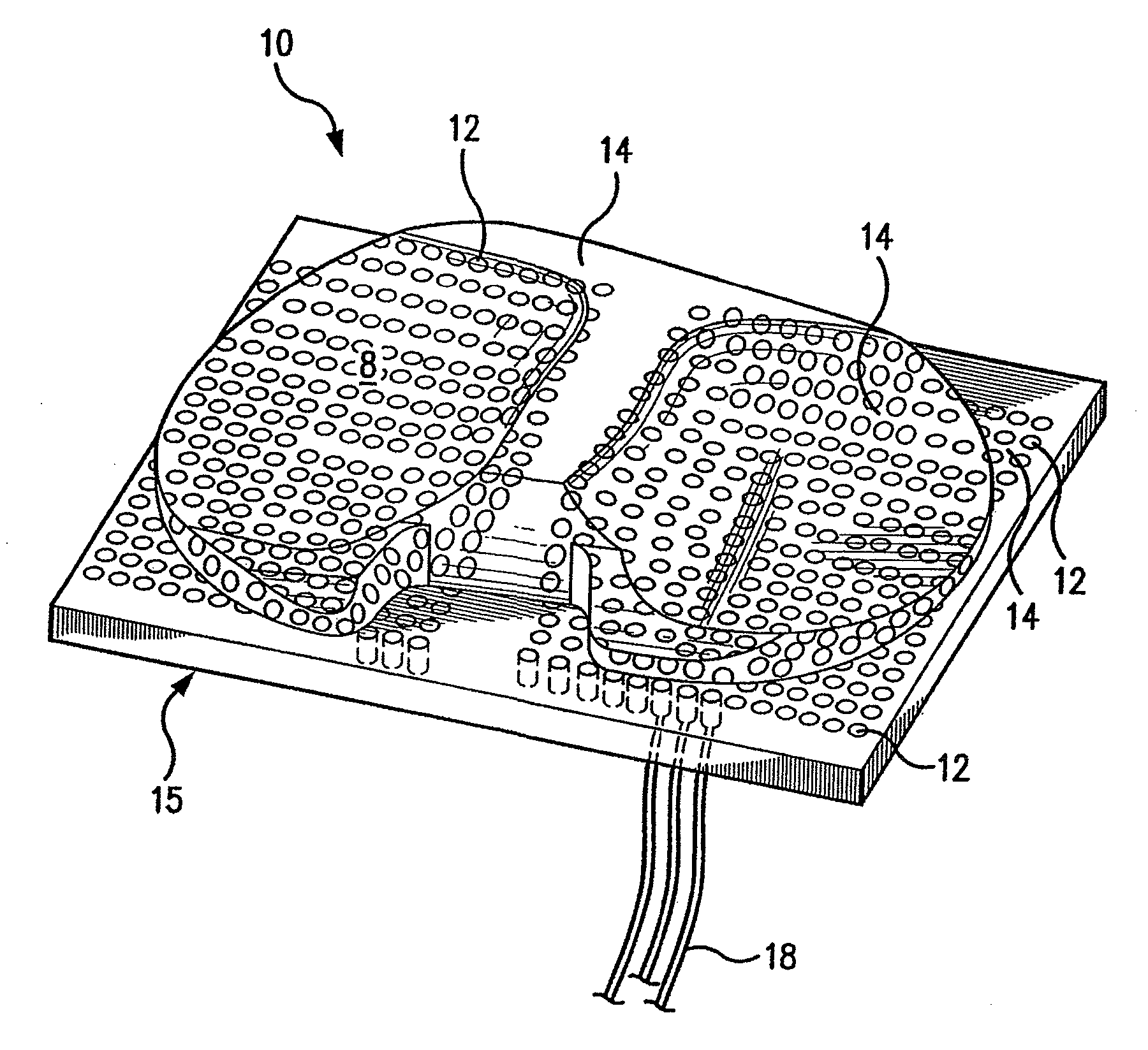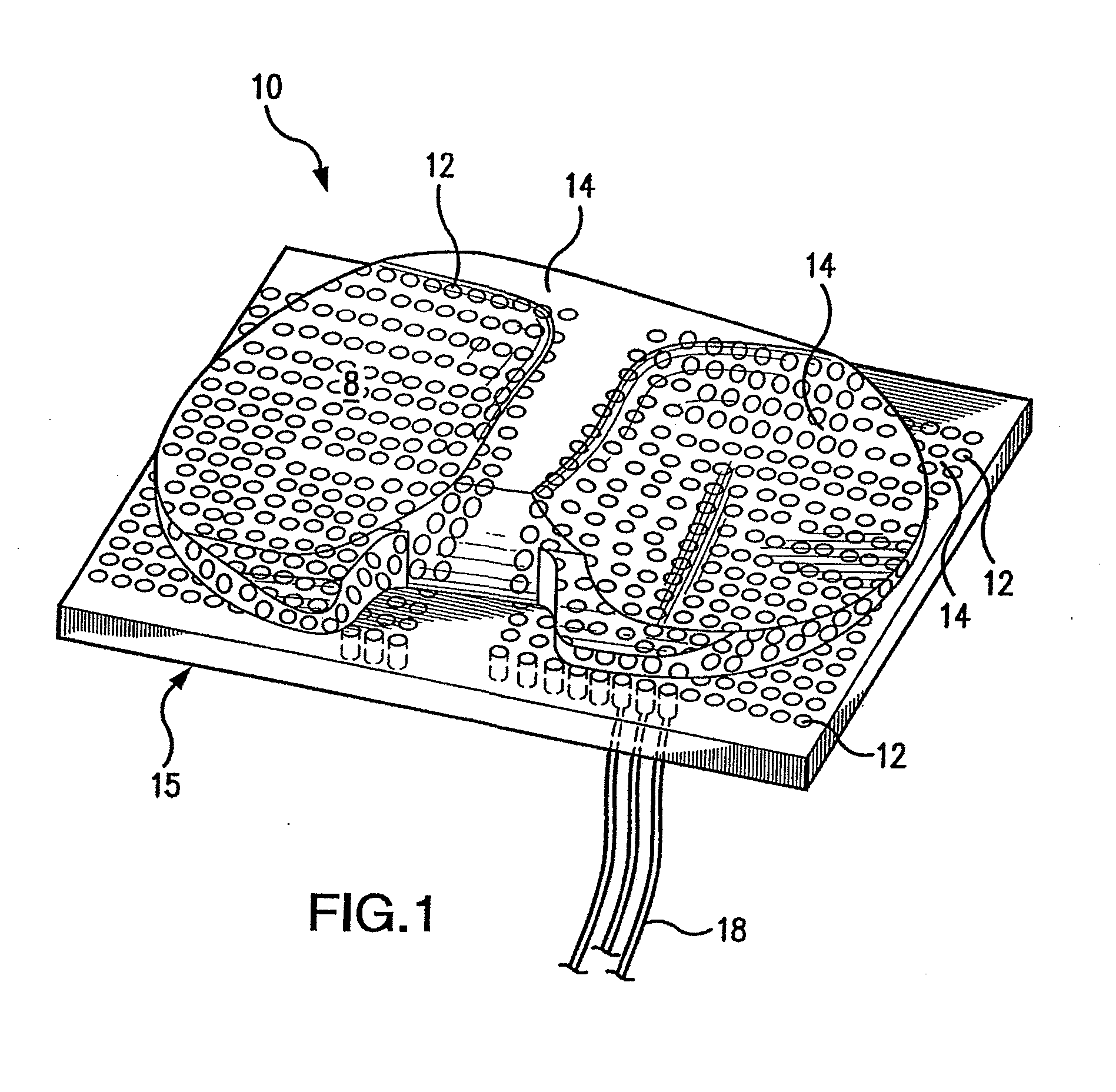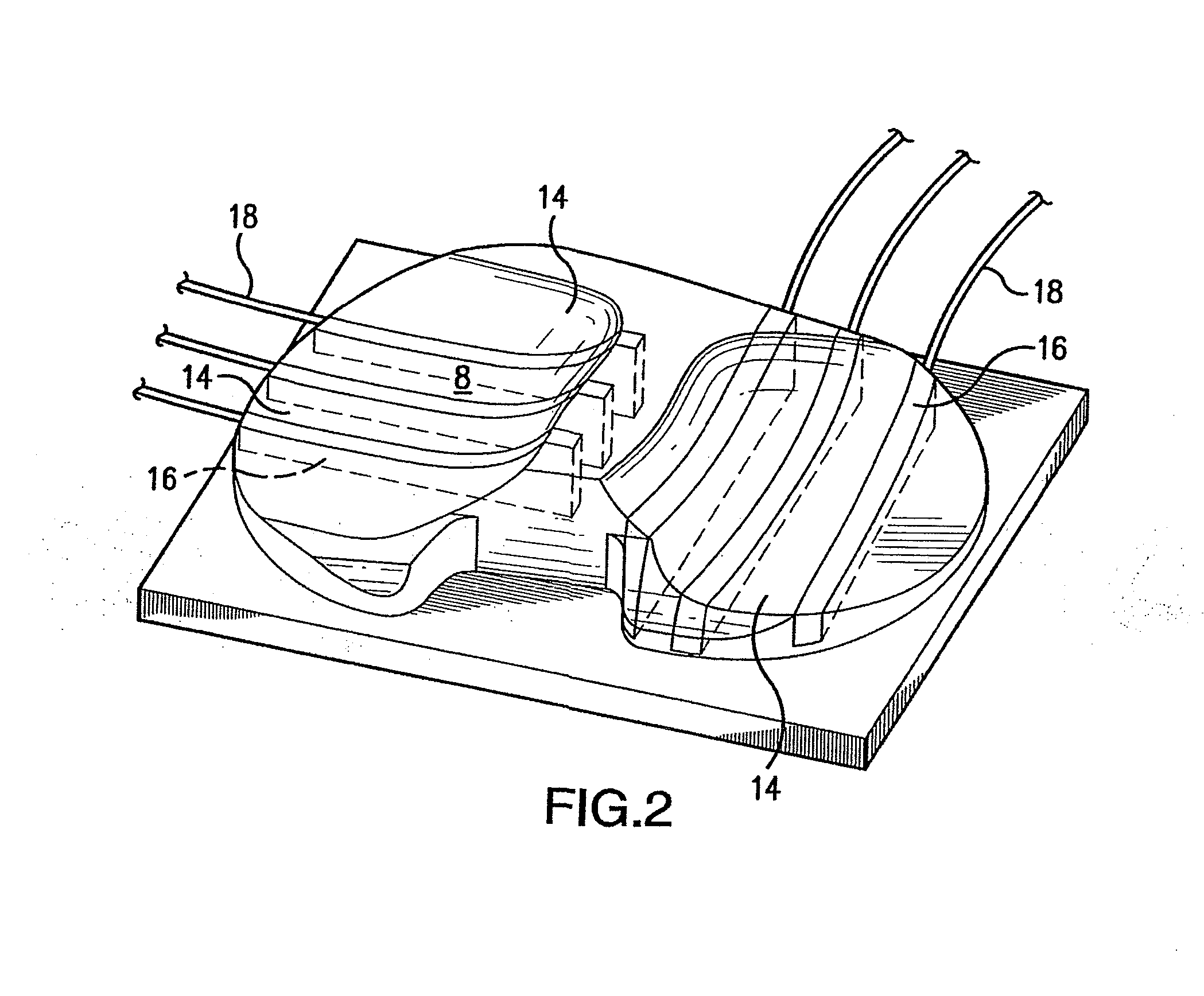Contact sensors and methods for making same
a technology of contact sensors and sensors, applied in the field of contact sensors, can solve the problems of reducing the performance of the sensor, affecting the quality of the sensor, so as to reduce the rate of early failur
- Summary
- Abstract
- Description
- Claims
- Application Information
AI Technical Summary
Benefits of technology
Problems solved by technology
Method used
Image
Examples
example 1
[0146]An industrial-grade UHMWPE powder (GUR 1150, available from Ticona Engineering Polymers) having a molecular weight of 6×106, density of 0.93 g / mL, Tm of 135° C., and an average particle size of 100 μm, was combined with carbon black (CB) (Printex L-6 available from Degussa Hulls, Dusseldorf, Germany) having a primary particle size of 18 nm and dibutyl phthalate absorption of 120 mL / 100 g. Amounts of each powder were placed in a 120 mL plastic sample container and initially manually shaken for 5 minutes to obtain four different samples having CB weight percentages of 0.25%, 0.5%, 1%, and 8%. The samples were then mixed for 10 minutes on a common laboratory vortex at the maximum speed setting.
[0147]Virgin UHMWPE powder and the four UHMWPE / CB powder mixtures were then compression-molded into rectangular sheets 12 cm long, 8.5 cm wide, and 2 mm thick using a mold consisting of a 2 mm thick Teflon frame sandwiched between 2 stainless steel plates that were coated with Teflon mold r...
example 2
[0154]Compression molding was used to form 2 rectangular blocks of 1150 UHMWPE doped with 8 wt % carbon black filler as described above for Example 1. The blocks formed included a 28×18 matrix of surface sensing points 12 as shown in FIG. 1. The points were circular with a 1 / 16th inch (1.59 mm) diameter and spaced every 1 / 10th inch (2.54 mm). The blocks were then machined to form both a highly-conforming, PCL-sacrificing tibial insert (Natural Knee II, Ultra-congruent size 3, Centerpulse Orthopedics, Austin, Tex.) and a less conforming PCL-retaining tibial insert (Natural Knee II, Standard-congruent, size 3, Centerpulse Orthopedics, Austin, Tex.) as illustrated in FIG. 1. The implants were then aligned and potted directly in PMMA in the tibial fixture of a multi-axis, force-controlled knee joint simulator (Stanmore / Instron, Model KC Knee Simulator). Static testing was performed with an axial load of 2.9 kN (4.times.B.W.) at flexion angles of 0°, 30°, 60°, and 80°, to eliminate the e...
example 3
[0157]Tecoflex SG-80A, a medical grade soft polyurethane available from Thermedics Inc. (Woburn, Mass.), was solution processed and molded including 4 wt % and 48 wt % CB to form two solid sample materials. FIGS. 11A and 11B graphically illustrate the resistance vs. compressive force applied to the samples for the 4% and 48% non-surfactant mixed samples, respectively. As can be seen, both samples showed pressure sensitive conductive characteristics suitable for forming the sensors as described herein where the value of resistance can be controlled with the amount of conductive filler added.
PUM
 Login to View More
Login to View More Abstract
Description
Claims
Application Information
 Login to View More
Login to View More - R&D
- Intellectual Property
- Life Sciences
- Materials
- Tech Scout
- Unparalleled Data Quality
- Higher Quality Content
- 60% Fewer Hallucinations
Browse by: Latest US Patents, China's latest patents, Technical Efficacy Thesaurus, Application Domain, Technology Topic, Popular Technical Reports.
© 2025 PatSnap. All rights reserved.Legal|Privacy policy|Modern Slavery Act Transparency Statement|Sitemap|About US| Contact US: help@patsnap.com



